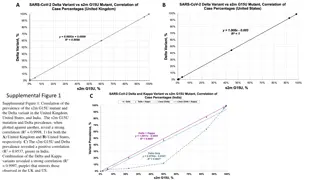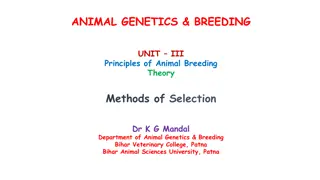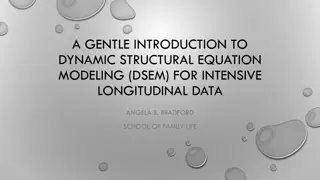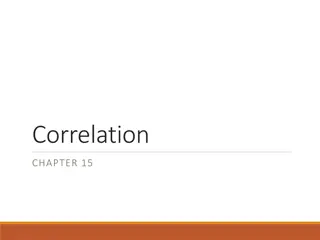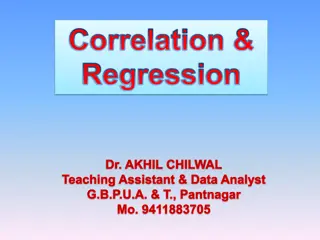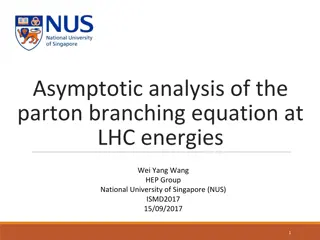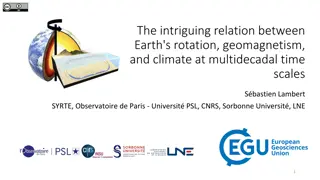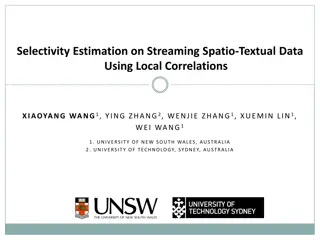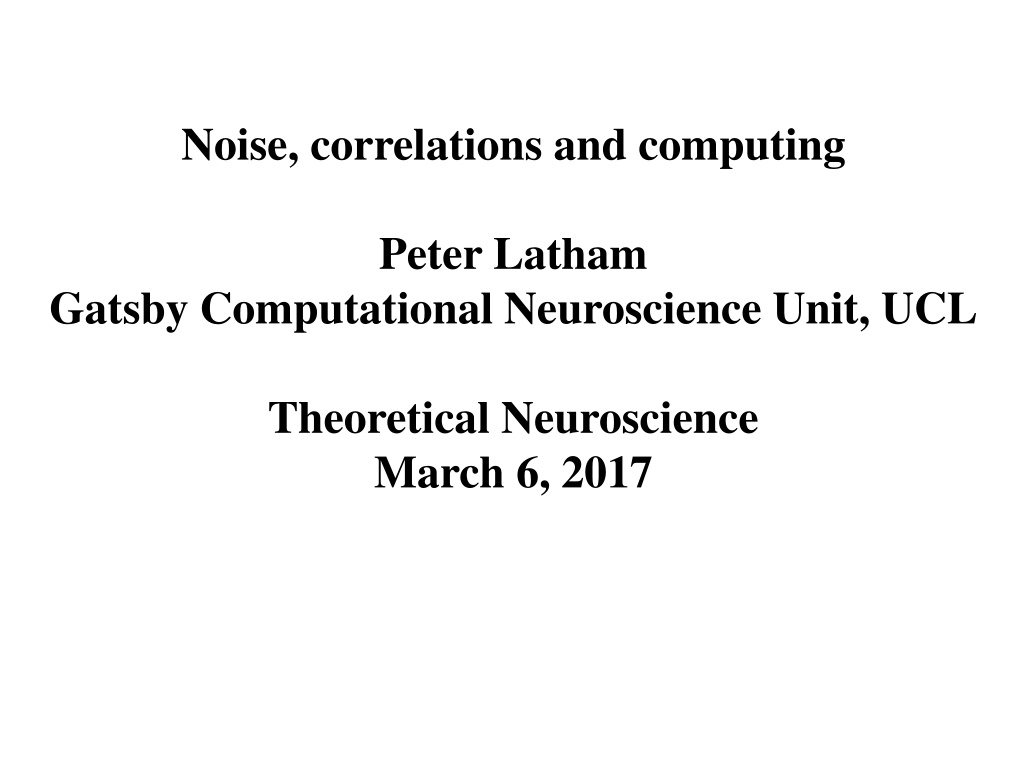
Understanding Noise, Correlations, and Computing in the Brain
Explore the impact of noise on sensory processing and motor output in the brain, highlighting the importance of managing noise for optimal functioning. The discussion delves into the complexities of neural computations and the brain's strategies for dealing with noise to achieve efficient operations.
Download Presentation

Please find below an Image/Link to download the presentation.
The content on the website is provided AS IS for your information and personal use only. It may not be sold, licensed, or shared on other websites without obtaining consent from the author. Download presentation by click this link. If you encounter any issues during the download, it is possible that the publisher has removed the file from their server.
E N D
Presentation Transcript
Noise, correlations and computing Peter Latham Gatsby Computational Neuroscience Unit, UCL Theoretical Neuroscience March 6, 2017
processing by the brain sensory stimulus motor output noise noise noise noise We re going to try to get at the question: how big is the noise?
Why do we care? We want to understand the transformation from sensory input to motor output. (How the brain works.) It s complicated! How we think about it depends on where we think the brain is putting its efforts. - If it s constantly battling noise, we would think about noise resistant algorithms. - If it s not constantly battling noise, we wouldn t.
x z = g(x, y) network y g(x, y) could be a simple function g(x, y) = angle relative to head = x+y x y
x z = g(x, y) network y or a complicated one x = visual stream of a movie y = auditory stream of the movie g(x, y) = plot
x z = g(x, y) network y here we ll focus on simple functions
x Var[x] = 2 z = g(x, y) x network y optimal Var[z] = 2 z Var[y] = 2 y z = x + y z = x + y 2 2 2
x Var[x] = 2 z = g(x, y) x network y optimal Var[z] = 2 + 2noise + 2 z approx Var[y] = 2 y There is additional variability in z, for two reasons: 1. Neurons are noisy. 2. Computations are always approximate.
x Var[x] = 2 z = g(x, y) x network y optimal Var[z] = 2 + 2noise + 2 z z approx Var[y] = 2 y If 2 is small, the brain will spend a lot of effort making computations near-optimal. noise If 2 is large, it will focus on reducing noise as much as possible. noise
x Var[x] = 2 z = g(x, y) x network y optimal Var[z] = 2 + 2noise + 2 z z approx Var[y] = 2 y We want to compute 2 , but how do we define it? noise
x The true story z = g(x, y) network y noise in the internal population code noise in the output population code
x The approximate story z = g(x, y) network y only noise in the output population code
x z = g(x, y) network y only noise in the output population code We re going to calculate how much information we can pack into a population code. intuition: if it s a lot, we can ignore noise. that s not quite correct, but it s close.
x Var[x] = 2 z = g(x, y) x network y optimal Var[z] = 2 + 2noise + 2 z z approx Var[y] = 2 y 1 2 noise information definition!
The question for the day: How much information can we pack into a population of neurons? The short answer: It s complicated.
The longer answer: When noise is independent across neurons, we can pack a lot of information into a population code. That s because the independence allows us to average away the noise. But noise is not independent; experimentally, noise across neurons is correlated.
Correlated: uncorrelated r2 r1
Correlated: correlated r2 r1
Correlated: correlated r2 r1 p(r1, r2| ) = p(r1| ) p(r2| ) p(r1, r2| ) p(r1| ) p(r2| ) uncorrelated: correlated:
The longer answer: When noise is independent across neurons, we can pack a lot of information into a population code. That s because the independence allows us to average away the noise. But noise is not independent; experimentally, noise across neurons is correlated.
Flash back to 1994: Zohary, Shadlen and Newsome, Nature (1994) Their result: correlations reduce the amount of information that you can pack into a network. They reduce the capacity.
noise aka trial-trial variability ri ri = x + i x
ri ri = x + i x x ^ ^ x 1 ^ x = iri N
ri ri = x + i x x^ ^x 1 1 N ^ x = iri N = x + i i 1 N2 1 ^ Var[x] = i Var[ i] + N2 i j Covar[ i , j] N terms: scales as 1/N ~N2 terms: constant in the large N limit.
ri ri = x + i x x^ ^x 1 1 N ^ x = iri N = x + i i 1 N2 1 ^ Var[x] = i Var[ i] + N2 i j Covar[ i , j] 2 2
ri ri = x + i x x^ ^x 1 1 N ^ x = iri N = x + i i 1 N2 1 ^ Var[x] = i Var[ i] + N2 i j Covar[ i , j] N 2 N(N-1) 2
ri ri = x + i x x^ ^x 1 1 N ^ x = iri N = x + i i (N-1) 2 N 2 N Var[x] = + ^
ri ri = x + i x x^ ^x 1 1 N ^ x = iri N = x + i i 2(1 ) Var[x] = + ^ 2 N
Flash back to 1994: Zohary, Shadlen and Newsome, Nature (1994) Their result: correlations reduce the amount of information that you can pack into a network. Correlations reduce the capacity. 2(1 ) Var[x] = + ^ 2 N
Flash back to 1994: Zohary, Shadlen and Newsome, Nature (1994) Their result: correlations reduce the amount of information that you can pack into a network. Positive correlations reduce the capacity. 2(1 ) Var[x] = + ^ 2 N
Flash back to 1994: Zohary, Shadlen and Newsome, Nature (1994) Their result: correlations reduce the amount of information that you can pack into a network. Negative correlations increase the capacity. 2(1 ) Var[x] = + ^ 2 N
Flash back to 1994: Zohary, Shadlen and Newsome, Nature (1994) Their result: correlations reduce the amount of information that you can pack into a network. Negative correlations increase the capacity. 2(1 + | |) Var[x] = ^ 2| | N
The next 23 years was devoted to pointing out that could be effectively negative (Abbott, Dayan, Sompolinsky) 2(1 ) Var[x] = + ^ 2 N
The next 23 years was devoted to pointing out that could be effectively negative (Abbott, Dayan, Sompolinsky) Now correlations increase capacity! 2(1 + | |) Var[x] = ^ 2| | N
There were two* interesting studies: Shamir and Sompolinsky, Neural Comp. 2006 Ecker, Berens, Tolias, Bethge, J. Neurosci. 2011 The conclusion: in realistic situations, correlations have very little effect on capacity: it s big 2(1 ) Var[x] = + ^ 2 N
There were two* interesting studies: Shamir and Sompolinsky, Neural Comp. 2006 Ecker, Berens, Tolias, Bethge, J. Neurosci. 2011 The conclusion: in realistic situations, correlations have very little effect on capacity: it s big 2 ^ Var[x] = N
There were two* interesting studies: Shamir and Sompolinsky, Neural Comp. 2006 Ecker, Berens, Tolias, Bethge, J. Neurosci. 2011 The conclusion: in realistic situations, correlations have very little effect on capacity: it s big 2 corrections ^ Var[x] = N *See also Peter Dayan, practice qualifier test question, 2004.
the statement in realistic situations, correlations have very little effect on capacity: it s big seems to imply in realistic situations, we can pack lots of information into population codes which implies we can forget about noise in the brain
x z = g(x, y) network y noise in the internal population code noise in the output population code
the statement in realistic situations, correlations have very little effect on capacity: it s big seems to imply in realistic situations, we can pack lots of information into population codes which implies we can forget about noise in the brain
My talk: Part 1: Why doesn t the statement in realistic situations, correlations have very little effect on capacity: it s big imply in realistic situations, we can pack lots of information into population codes ? Part 2: Can we forget about noise in the brain?
x A brief preview z = g(x, y) network y
rx A brief preview rz = G(rx, ry) network ry
rx A brief preview rz = G(rx, ry) + noise network ry depends on network dynamics inherits the noise properties of rx and ry rz = G(fx + x, fy + y)
rx A brief preview rz = G(rx, ry) + noise network ry depends on network dynamics inherits the noise properties of rx and ry These terms interact. It s not enough to know how small the noise is; you have to know its properties.
My talk: Part 1: Why doesn t the statement in realistic situations, correlations have very little effect on capacity: it s big imply in realistic situations, we can pack lots of information into population codes ? Part 2: Can we forget about noise in the brain?
For both parts of this talk, we need a relatively deep understanding of information. If all goes well, the next few slides will provide that understanding.
The usual situation: variables are represented by noisy population activity. often written f(x - xi) fi(x) ri x
The usual situation: variables are represented by noisy population activity. fi(x) ri ri = fi(x) + i x




